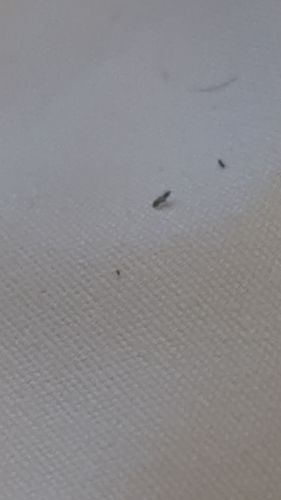Fungus Gnat
Scientific Name: Bradysia spp. (common genus, but specific species is hard to determine from image)
Order & Family: Diptera (Order), Sciaridae or Mycetophilidae (Family)
Size: 2-8 mm (adults)

Natural Habitat
Damp, decaying organic matter; common in potted plants, greenhouses, and moist soil.
Diet & Feeding
Adults typically do not feed or feed on liquids; larvae feed on fungi, decaying plant matter, and sometimes plant roots.
Behavior Patterns
Adult fungus gnats are weak flyers and are often seen near the soil surface of potted plants or flying around lights. They are attracted to moisture and decaying organic material for egg-laying.
Risks & Benefits
Larvae can damage plant roots, especially in seedlings and young plants, leading to wilting and stunted growth. They can be a nuisance in homes but are generally harmless to humans. There are no significant benefits associated with their presence indoors.
Identified on: 9/30/2025